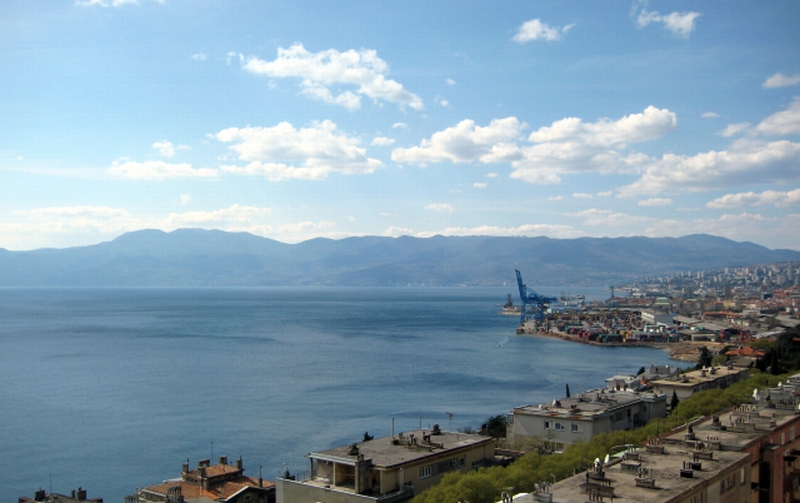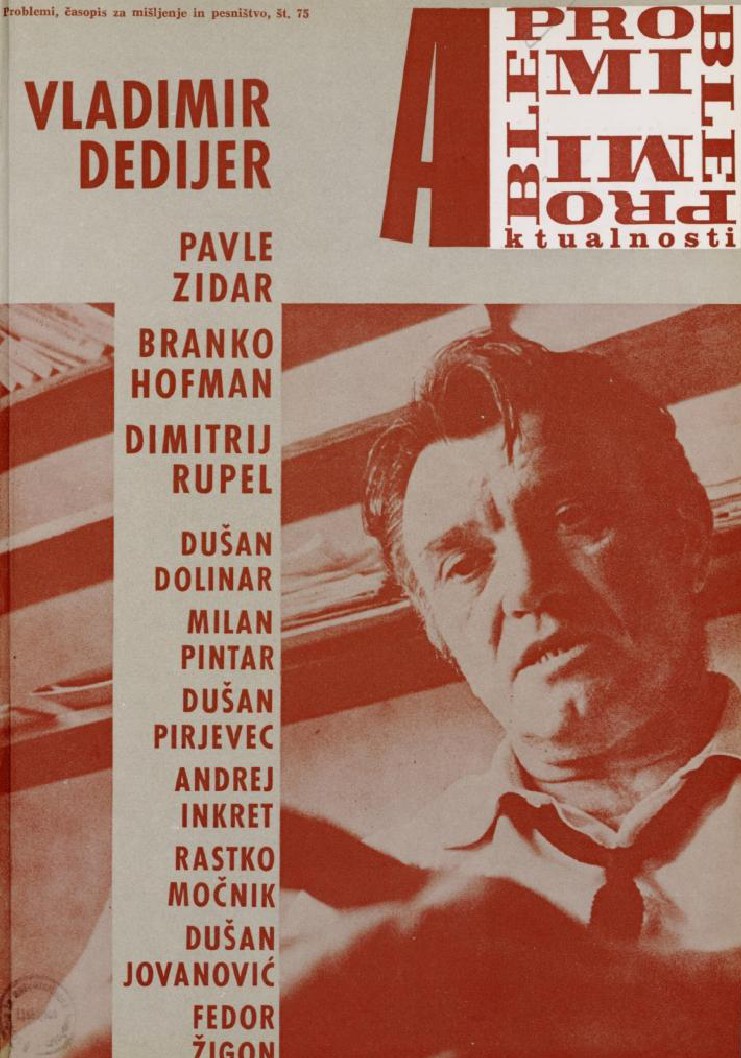|
4th Army (Yugoslav Partisans)
The 4th Army of the Yugoslav Partisans was a Partisan army that operated in Yugoslavia during the last months of the Second World War. The Army was created on 1 March 1945, when Chief Commander Marshal Josip Broz Tito converted the underground National Liberation Army and Partisan Detachments of Yugoslavia in the more regular Yugoslav Army. History As commander was named General lieutenant Petar Drapšin, as Political Commissioner Colonel Boško Šiljegović, and as Chief of staff, Colonel Pavle Jakšić. The Army was formed from the divisions of the 7th Corps (14th and 18th), 8th Corps (9th, 19th, 20th and 26th Dalmatian), 11th Corps (13th, 35th and 43rd) and later also the 9th Corps (30th and 31st). In addition the 4th Army had an Artillery, 1st Tank, Engineer and Replacement Brigade, a Motorized Artillery Battalion and a liaison regiment. Three major operations were carried out in the Liberation of Yugoslavia: the Lika-Primorje operation (March 20 – 15 April 1945), t ... [...More Info...] [...Related Items...] OR: [Wikipedia] [Google] [Baidu] |
Yugoslav Partisans
The Yugoslav Partisans,Serbo-Croatian, Macedonian, Slovene: , or the National Liberation Army, sh-Latn-Cyrl, Narodnooslobodilačka vojska (NOV), Народноослободилачка војска (НОВ); mk, Народноослободителна војска (НОВ); sl, Narodnoosvobodilna vojska (NOV) officially the National Liberation Army and Partisan Detachments of Yugoslavia, sh-Latn-Cyrl, Narodnooslobodilačka vojska i partizanski odredi Jugoslavije (NOV i POJ), Народноослободилачка војска и партизански одреди Југославије (НОВ и ПОЈ); mk, Народноослободителна војска и партизански одреди на Југославија (НОВ и ПОЈ); sl, Narodnoosvobodilna vojska in partizanski odredi Jugoslavije (NOV in POJ) was the communist-led anti-fascist resistance to the Axis powers (chiefly Germany) in occupied Yugoslavia during World War II. Led by Josip Broz T ... [...More Info...] [...Related Items...] OR: [Wikipedia] [Google] [Baidu] |
Hrvatsko Primorje
Croatian Littoral ( hr, Hrvatsko primorje) is a historical name for the region of Croatia comprising mostly the coastal areas between traditional Dalmatia to the south, Mountainous Croatia to the north, Istria and the Kvarner Gulf of the Adriatic Sea to the west. The term "Croatian Littoral" developed in the 18th and 19th centuries, reflecting the complex development of Croatia in historical and geographical terms. The region saw frequent changes to its ruling powers since classical antiquity, including the Roman Empire, the Ostrogoths, the Lombards, the Byzantine Empire, the Frankish Empire, and the Croats, some of whose major historical heritage originates from the area—most notably the Baška tablet. The region and adjacent territories became a point of contention between major European powers, including the Republic of Venice, the Kingdom of Hungary, and the Habsburg and Ottoman Empires, as well as Austria, the First French Empire, the Kingdom of Italy, and Yugoslavia. Ge ... [...More Info...] [...Related Items...] OR: [Wikipedia] [Google] [Baidu] |
1945 Disestablishments In Yugoslavia
1945 marked the end of World War II and the fall of Nazi Germany and the Empire of Japan. It is also the only year in which Nuclear weapon, nuclear weapons Atomic bombings of Hiroshima and Nagasaki, have been used in combat. Events Below, the events of World War II have the "WWII" prefix. January * January 1 – WWII: ** Nazi Germany, Germany begins Operation Bodenplatte, an attempt by the ''Luftwaffe'' to cripple Allies of World War II, Allied air forces in the Low Countries. ** Chenogne massacre: German prisoners are allegedly killed by American forces near the village of Chenogne, Belgium. * January 6 – WWII: A German offensive recaptures Esztergom, Kingdom of Hungary (1920–1946), Hungary from the Russians. * January 12 – WWII: The Soviet Union begins the Vistula–Oder Offensive in Eastern Europe, against the German Army (Wehrmacht), German Army. * January 13 – WWII: The Soviet Union begins the East Prussian Offensive, to eliminate German forces in East Pruss ... [...More Info...] [...Related Items...] OR: [Wikipedia] [Google] [Baidu] |
Military Units And Formations Disestablished In 1945
A military, also known collectively as armed forces, is a heavily armed, highly organized force primarily intended for warfare. It is typically authorized and maintained by a sovereign state, with its members identifiable by their distinct military uniform. It may consist of one or more military branches such as an army, navy, air force, space force, marines, or coast guard. The main task of the military is usually defined as defence of the state and its interests against external armed threats. In broad usage, the terms ''armed forces'' and ''military'' are often treated as synonymous, although in technical usage a distinction is sometimes made in which a country's armed forces may include both its military and other paramilitary forces. There are various forms of irregular military forces, not belonging to a recognized state; though they share many attributes with regular military forces, they are less often referred to as simply ''military''. A nation's military may ... [...More Info...] [...Related Items...] OR: [Wikipedia] [Google] [Baidu] |
Military Units And Formations Established In 1945
A military, also known collectively as armed forces, is a heavily armed, highly organized force primarily intended for warfare. It is typically authorized and maintained by a sovereign state, with its members identifiable by their distinct military uniform. It may consist of one or more military branches such as an army, navy, air force, space force, marines, or coast guard. The main task of the military is usually defined as defence of the state and its interests against external armed threats. In broad usage, the terms ''armed forces'' and ''military'' are often treated as synonymous, although in technical usage a distinction is sometimes made in which a country's armed forces may include both its military and other paramilitary forces. There are various forms of irregular military forces, not belonging to a recognized state; though they share many attributes with regular military forces, they are less often referred to as simply ''military''. A nation's military may ... [...More Info...] [...Related Items...] OR: [Wikipedia] [Google] [Baidu] |
Slovenian Wikipedia
The Slovene Wikipedia ( sl, Slovenska Wikipedija) is the Slovene-language edition of the free online encyclopedia Wikipedia. It has been active since 26 February 2002. On 15 August 2010, it reached 100,000 articles. As of , it has about articles. Wikipedia is a widely used reference work and one of the most visited social networking services by users from Slovenia, but official internet usage statistics do not distinguish between Wikipedia editions, analyzing only the base domain wikipedia.org. In most cases, the Slovene-language edition gets a passing note of its existence in media reports about Wikipedia in general. However, as a relatively large and freely accessible body of structured knowledge, Slovene Wikipedia has been used, as an example, for building text corpora for the purpose of training linguistic software and analyzing Slovene literary authors' web presence. There are several successful collaboration projects with professors at the University of Ljubljan ... [...More Info...] [...Related Items...] OR: [Wikipedia] [Google] [Baidu] |
Vladimir Dedijer
Vladimir Dedijer ( sr-Cyrl, Владимир Дедијер; 4 February 1914 – 30 November 1990) was a Yugoslav partisan fighter during World War II who became known as a politician, human rights activist, and historian. In the early postwar years, he represented Yugoslavia at the United Nations and was a senior government official. Later, after being at cross purposes with the government, he concentrated on his academic career as a historian. He taught at the University of Belgrade and also served as a visiting professor at several universities in the United States and Europe. He participated in the Bertrand Russell International War Crimes Tribunal in 1967, reviewing United States forces activities in Vietnam, and in later tribunals. Origins and family Vladimir Dedijer was born to a Serbian family in Belgrade, in the Kingdom of Serbia, which later was absorbed into Yugoslavia. His family originated from Čepelica, Bileća in Bosnia and Herzegovina and were Orthodox Christian ... [...More Info...] [...Related Items...] OR: [Wikipedia] [Google] [Baidu] |
Ljubljana
Ljubljana (also known by other historical names) is the capital and largest city of Slovenia. It is the country's cultural, educational, economic, political and administrative center. During antiquity, a Roman city called Emona stood in the area. Ljubljana itself was first mentioned in the first half of the 12th century. Situated at the middle of a trade route between the northern Adriatic Sea and the Danube region, it was the historical capital of Carniola, one of the Slovene-inhabited parts of the Habsburg monarchy. It was under Habsburg rule from the Middle Ages until the dissolution of the Austro-Hungarian Empire in 1918. After World War II, Ljubljana became the capital of the Socialist Republic of Slovenia, part of the Socialist Federal Republic of Yugoslavia. The city retained this status until Slovenia became independent in 1991 and Ljubljana became the capital of the newly formed state. Name The origin of the name ''Ljubljana'' is unclear. In the Middle Ages, both ... [...More Info...] [...Related Items...] OR: [Wikipedia] [Google] [Baidu] |
Postojna
Postojna (; german: Adelsberg, it, Postumia) is a town in the traditional region of Inner Carniola, from Trieste, in southwestern Slovenia. It is the seat of the Municipality of Postojna.Postojna municipal site History The area is known to have been populated since the era due to the discovery of a cave settlement near the town of Postojna called (). The town lies on the Pivka River. Written sources first mention the settlement in the 13th century and in 1432 it bec ...[...More Info...] [...Related Items...] OR: [Wikipedia] [Google] [Baidu] |
Carinthia
Carinthia (german: Kärnten ; sl, Koroška ) is the southernmost States of Austria, Austrian state, in the Eastern Alps, and is noted for its mountains and lakes. The main language is German language, German. Its regional dialects belong to the Southern Bavarian group. Carinthian dialect group, Carinthian Slovene dialects, forms of a South Slavic languages, Slavic language that predominated in the southeastern part of the region up to the first half of the 20th century, are now spoken by a Carinthian Slovenes, small minority in the area. Carinthia's main Industry (economics), industries are tourism, electronics, engineering, forestry, and agriculture. Name The etymology of the name "Carinthia", similar to Carnia or Carniola, has not been conclusively established. The ''Ravenna Cosmography'' (about AD 700) referred to a Slavic settlement of the Eastern Alps, Slavic "Carantani" tribe as the eastern neighbours of the Bavarians. In his ''History of the Lombards'', the 8th-c ... [...More Info...] [...Related Items...] OR: [Wikipedia] [Google] [Baidu] |
Trieste
Trieste ( , ; sl, Trst ; german: Triest ) is a city and seaport in northeastern Italy. It is the capital city, and largest city, of the autonomous region of Friuli Venezia Giulia, one of two autonomous regions which are not subdivided into provinces. Trieste is located at the head of the Gulf of Trieste, on a narrow strip of Italian territory lying between the Adriatic Sea and Slovenia; Slovenia lies approximately east and southeast of the city, while Croatia is about to the south of the city. The city has a long coastline and is surrounded by grassland, forest, and karstic areas. The city has a subtropical climate, unusual in relation to its relatively high latitude, due to marine breezes. In 2022, it had a population of about 204,302. Capital of the autonomous region of Friuli Venezia Giulia and previously capital of the Province of Trieste, until its abolition on 1 October 2017. Trieste belonged to the Habsburg monarchy from 1382 until 1918. In the 19th century the mon ... [...More Info...] [...Related Items...] OR: [Wikipedia] [Google] [Baidu] |






